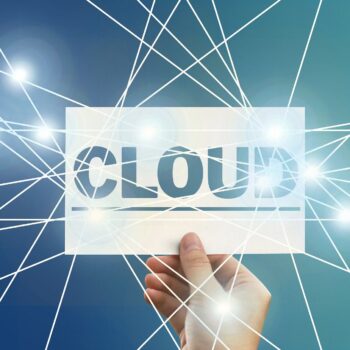
Data security beyond the network: SASE platforms (Secure Access Service Edge). Companies are extremely adaptable, as the pandemic crisis has shown. New workflows were quickly created that keep business operations fully digital.
The collaboration takes place via collaboration tools, the processing of important documents via cloud applications and personal coordination in individual cases via messenger services on private mobile devices. However, the changes in the digital work environment make it difficult for companies to ensure data security.
Dynamic access to on-premises and cloud applications
The requirement to be able to maintain business processes regardless of location in an emergency pushes the traditional model of the memory architecture, in which applications, data and users are located within the company network, to its limits. Dynamic access from anywhere to on-premises and cloud applications as well as the web is required. In doing so, data security must be guaranteed.
In order to protect users, devices and data beyond the network perimeter, companies have upgraded with additional, mostly independent, security solutions. However, this is not an ideal practice in several ways. On the one hand, the operation of several independent solutions causes higher costs on average. In addition, the manual replication of security policies in different products and dashboards can increase the probability of errors and lead to inconsistent protective measures.
Dangers beyond the network perimeter
An overarching, holistic approach is necessary for more efficiency and higher security. To do this, however, companies have to fundamentally question all the solutions they operate and their functions. When it comes to data security, there is a threat beyond the network perimeter not only from external attackers, but also from risky employee behavior.
The main concern for companies must therefore be to protect their data, regardless of where it is located. The various conceivable paths that data can take within the organization provide starting points for checking the existing security measures. Do employees use their own devices to access company resources? Does this possibly happen even though it has been prohibited? Will company data be moved to private accounts with cloud services? Can data protection requirements - for example in the course of an incident or a deletion request - be complied with in accordance with the law and at a reasonable cost?
CASB, ZTNA and SWG technologies for secure interactions
Holistic approaches to data security outside of your own network are supported by Secure Access Services Edge (SASE) solutions. These are security platforms that combine various network and cloud security solutions under one roof, in particular Cloud Access Security Broker (CASB), Zero Trust Network Access (ZTNA) and Secure Web Gateway (SWG) technologies. These solutions provide organizations with data protection and threat protection for every interaction between devices, apps, web targets, on-premises resources and infrastructure. Essentially, the various SASE offers offer the following core functions:
Data visibility
Certain functions make it possible to trace the path of company data and the associated user activities. With them, companies can recognize which documents are exchanged by employees, with whom and how they are exchanged and to what extent these activities involve risks of data loss. In addition, companies can track and document the movement of data that falls under industry-specific regulations to demonstrate that it is secure in the cloud, on the web and in local resources.
Data protection
Corporate data requires contextual control. This is the only way to ensure that confidential information does not fall into the wrong hands. Granular Data Loss Prevention (DLP) guidelines identify sensitive information in order to protect data on the web, in SaaS and IaaS solutions, and in on-premises applications. In this way, DLP prevents data leaks during access and exfiltration over the Internet.
Identity and Access Management (IAM)
Authenticating users is the first step towards intelligent, contextual security. Single sign-on (SSO) tools serve as the single point of authentication for all corporate resources, while multi-factor authentication (MFA) requires another form of identity verification, such as an SMS token sent in text. IAM protects both companies and their employees from malicious actors who try to hijack their user accounts.
Protection against threats
As cybercriminals are constantly changing their attack methods, companies must prepare for the unforeseen. SASE platforms block both known and zero-day malware in all resources and stop access to malicious web targets that include malware infections and phishing campaigns. In addition, they can identify and stop insider threats, whether caused by careless users or hackers with stolen credentials.
Consistent security
New ways of working and advancing digitization require companies to redesign their security strategy from the perspective of data. SASE platforms represent a way of creating seamless data security, replacing existing security tools and controlling the entire security infrastructure centrally via a single dashboard. In this way, companies can efficiently adapt their security measures to new, future requirements. More about SASE platforms at Bitglass.com.
[starboxid=4]
